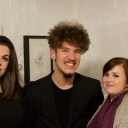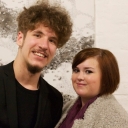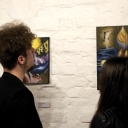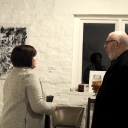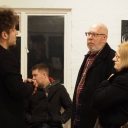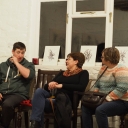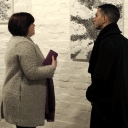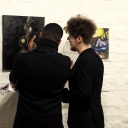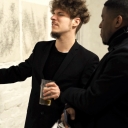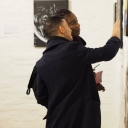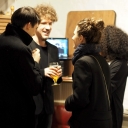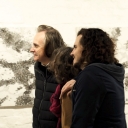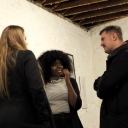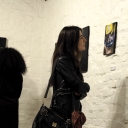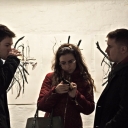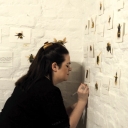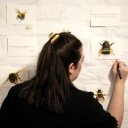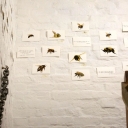Preview Night: Friday 29th January 2016 from 6:30pm
Exhibition: 24th January – 7th February 2016, 12pm – 6pm
The Ladywell Gallery is proud to announce Visual Abstraction, an exhibition by Laura Hepworth with guest artists Maciej Jedrzejewski & Sophie Lewis.
In many cases where art and science collide, paradoxes occur in the artist’s work that has found influences in the findings of research by the work of scientists. Pablo Picasso, Robert Van Doesburg and Piet Mondrian, have included this interdisciplinary concept into their work, this is evident in Picasso’s paintings reflected in Albert Einstein’s theory of space time relativity and how he achieved this understanding of geometric form within the chaos of his works. I have thought about how these artists have used the branches of science to explore new artistic processes to enrich and expand their own self awareness and understanding of the topics, not just for the artist but for the audience. Here are a few examples of the many topics discussed within the artist’s work, space-time relativity, geometry and physical chemistry. Even in the works of Leonardo Da Vinci in the late 1400s to early 1500s. Da Vinci produced a series of works, e.g. Vitruvian Man (1490), and drawings on human anatomy in Recto (1490) exploring the accurate measurements of the human body. The influence of human anatomy throughout his investigations formed a platform to broaden the minds of the audience through the process in which scientific data becomes art.
I have acknowledged that certain aspects of science play a major role in the process of artistic design and can be represented as a means, to solve the complexity of scientific data, in a format that is understandable. The discussion of how the connections between art & science, have created a revolutionary movement of artists working within this interdisciplinary concept. In this way, the two cultures co-exist outside of the environment and constraints present within the modern and contemporary arts. This raises the question of how successful the methods of communication within the visual language of science are. In answering this question, I will compare the work of contemporary artists with those involved in modern art in regard to astrophysics. This will lead to discussion of how the connection between the artist and scientist has become greater over time, particularly within subjects like astrophysics and astronomy. I have chosen Katie Paterson, Conrad Shawcross, and Pablo Picasso as representatives from the contemporary and modern art world to form a discussion observing the methodology of process within the artist’s work, and then comparing them, in relation to the level of success achieved, when interpreting the science and data in their work. Which asks the question when does the representation of scientific data become art, and how the process enables science to become understandable?
An extract from thesis: “When does the representation of scientific data become art?”
By Laura Hepworth


